Tektronix TBS1152B-EDU User manual
- Category
- Measuring, testing & control
- Type
- User manual
This manual is also suitable for

TBS1000B and TBS1000B-EDU Series
Digital Storage Oscilloscopes
User Manual
*P077088600*
077-0886-00


TBS1000B and TBS1000B-EDU Series
Digital Storage Oscilloscopes
User Manual
www.tektronix.com
077-0886-00

Copyright
©
Tektronix. All rights reserved. Licensed software products are owned by Tektronix or its subsidiaries
or suppliers, and are protected by national copyright laws and international treaty provisions. Tektronix products
are covered by U.S. and foreign patents, issued and pending. Information in this publication supersedes that in all
previously published material. Specifications and price change privileges reserved.
TEKTRONIX and TEK are registered trademarks of Tektronix, Inc.
OpenChoice
™
is a registered trademark of Tektronix, Inc.
PictBridge is a registered trademark of the Standard of Camera & Imaging Products Association CIPA
DC-001-2003 Digital Photo Solutions for Imaging Devices.
Contacting Tektronix
Tektronix, Inc.
14150 SW Karl Braun Drive
P.O. Box 500
Beaverton, OR 97077
USA
For product information, sales, service, and technical support:
■
In North America, call 1-800-833-9200.
■
Worldwide, visit www.tektronix.com to find contacts in your area.

Warranty
Tektronix warrants that the product will be free from defects in materials and workmanship for a period of five (5)
years from the date of original purchase from an authorized Tektronix distributor. If the product proves defective
during this warranty period, Tektronix, at its option, either will repair the defective product without charge for
parts and labor, or will provide a replacement in exchange for the defective product. Batteries are excluded from
this warranty. Parts, modules and replacement products used by Tektronix for warranty work may be new or
reconditioned to like new performance. All replaced parts, modules and products become the property of
Tektronix.
In order to obtain service under this warranty, Customer must notify Tektronix of the defect before the expiration
of the warranty period and make suitable arrangements for the performance of service. Customer shall be
responsible for packaging and shipping the defective product to the service center designated by Tektronix,
shipping charges prepaid, and with a copy of customer proof of purchase. Tektronix shall pay for the return of the
product to Customer if the shipment is to a location within the country in which the Tektronix service center is
located. Customer shall be responsible for paying all shipping charges, duties, taxes, and any other charges for
products returned to any other locations.
This warranty shall not apply to any defect, failure or damage caused by improper use or improper or inadequate
maintenance and care. Tektronix shall not be obligated to furnish service under this warranty a) to repair damage
resulting from attempts by personnel other than Tektronix representatives to install, repair or service the product;
b) to repair damage resulting from improper use or connection to incompatible equipment; c) to repair any
damage or malfunction caused by the use of non-Tektronix supplies; or d) to service a product that has been
modified or integrated with other products when the effect of such modification or integration increases the time
or difficulty of servicing the product.
THIS WARRANTY IS GIVEN BY TEKTRONIX WITH RESPECT TO THE PRODUCT IN LIEU OF ANY
OTHER WARRANTIES, EXPRESS OR IMPLIED. TEKTRONIX AND ITS VENDORS DISCLAIM ANY
IMPLIED WARRANTIES OF MERCHANTABILITY OR FITNESS FOR A PARTICULAR PURPOSE.
TEKTRONIX' RESPONSIBILITY TO REPAIR OR REPLACE DEFECTIVE PRODUCTS IS THE SOLE AND
EXCLUSIVE REMEDY PROVIDED TO THE CUSTOMER FOR BREACH OF THIS WARRANTY.
TEKTRONIX AND ITS VENDORS WILL NOT BE LIABLE FOR ANY INDIRECT, SPECIAL,
INCIDENTAL, OR CONSEQUENTIAL DAMAGES IRRESPECTIVE OF WHETHER TEKTRONIX OR THE
VENDOR HAS ADVANCE NOTICE OF THE POSSIBILITY OF SUCH DAMAGES.
[W19 – 03AUG12]

Warranty
Tektronix warrants that the product will be free from defects in materials and workmanship for a period of one (1)
year from the date of original purchase from an authorized Tektronix distributor. If the product proves defective
during this warranty period, Tektronix, at its option, either will repair the defective product without charge for
parts and labor, or will provide a replacement in exchange for the defective product. Batteries are excluded from
this warranty. Parts, modules and replacement products used by Tektronix for warranty work may be new or
reconditioned to like new performance. All replaced parts, modules and products become the property of
Tektronix.
In order to obtain service under this warranty, Customer must notify Tektronix of the defect before the expiration
of the warranty period and make suitable arrangements for the performance of service. Customer shall be
responsible for packaging and shipping the defective product to the service center designated by Tektronix,
shipping charges prepaid, and with a copy of customer proof of purchase. Tektronix shall pay for the return of the
product to Customer if the shipment is to a location within the country in which the Tektronix service center is
located. Customer shall be responsible for paying all shipping charges, duties, taxes, and any other charges for
products returned to any other locations.
This warranty shall not apply to any defect, failure or damage caused by improper use or improper or inadequate
maintenance and care. Tektronix shall not be obligated to furnish service under this warranty a) to repair damage
resulting from attempts by personnel other than Tektronix representatives to install, repair or service the product;
b) to repair damage resulting from improper use or connection to incompatible equipment; c) to repair any
damage or malfunction caused by the use of non-Tektronix supplies; or d) to service a product that has been
modified or integrated with other products when the effect of such modification or integration increases the time
or difficulty of servicing the product.
THIS WARRANTY IS GIVEN BY TEKTRONIX WITH RESPECT TO THE PRODUCT IN LIEU OF ANY
OTHER WARRANTIES, EXPRESS OR IMPLIED. TEKTRONIX AND ITS VENDORS DISCLAIM ANY
IMPLIED WARRANTIES OF MERCHANTABILITY OR FITNESS FOR A PARTICULAR PURPOSE.
TEKTRONIX' RESPONSIBILITY TO REPAIR OR REPLACE DEFECTIVE PRODUCTS IS THE SOLE AND
EXCLUSIVE REMEDY PROVIDED TO THE CUSTOMER FOR BREACH OF THIS WARRANTY.
TEKTRONIX AND ITS VENDORS WILL NOT BE LIABLE FOR ANY INDIRECT, SPECIAL,
INCIDENTAL, OR CONSEQUENTIAL DAMAGES IRRESPECTIVE OF WHETHER TEKTRONIX OR THE
VENDOR HAS ADVANCE NOTICE OF THE POSSIBILITY OF SUCH DAMAGES.
[W15 – 15AUG04]

Table of Contents
Important safety information ............................................................................................................. vii
General safety summary ............................................................................................................... vii
Service safety summary .................................................................................................................. x
Terms in the manual ...................................................................................................................... xi
Terms on the product ..................................................................................................................... xi
Symbols on the product ................................................................................................................. xi
Compliance information ................................................................................................................... xiii
EMC compliance ......................................................................................................................... xiii
Safety compliance ......................................................................................................................... xv
Environmental compliance ......................................................................................................... xvii
Getting started
General features .............................................................................................................................. 1
Installation ...................................................................................................................................... 2
Power cord ................................................................................................................................. 2
Power source ............................................................................................................................. 2
Security loop .............................................................................................................................. 3
Ventilation ................................................................................................................................. 3
Functional check ............................................................................................................................. 3
Probe safety .................................................................................................................................... 5
Manual probe compensation ........................................................................................................... 5
Probe attenuation setting ................................................................................................................ 6
Current probe scaling ...................................................................................................................... 7
Self calibration ................................................................................................................................ 7
Firmware updates through the internet ........................................................................................... 7
Check the version of your current firmware ............................................................................. 7
Check the version of the latest available firmware ................................................................... 8
If the latest available firmware is newer than that on your TBS1000B update your product
firmware ............................................................................................................................... 8
Operating basics
Display area .................................................................................................................................. 10
Message area ........................................................................................................................... 11
Using the menu system ................................................................................................................. 12
Vertical controls ........................................................................................................................... 12
Horizontal controls ....................................................................................................................... 13
TBS1000B and TBS1000B-EDU Series Oscilloscopes User Manual i

Trigger controls ............................................................................................................................ 14
Menu and control buttons ............................................................................................................. 15
Input connectors ........................................................................................................................... 16
Other front-panel items ................................................................................................................. 17
Understanding oscilloscope functions
Setting up the oscilloscope ........................................................................................................... 20
Using autoset ........................................................................................................................... 20
Using autorange ....................................................................................................................... 20
Saving a setup .......................................................................................................................... 20
Recalling a setup ..................................................................................................................... 20
Default setup ............................................................................................................................ 20
Triggering ..................................................................................................................................... 21
Source ...................................................................................................................................... 21
Types ....................................................................................................................................... 22
Modes ...................................................................................................................................... 22
Coupling .................................................................................................................................. 22
Position .................................................................................................................................... 22
Slope and level ........................................................................................................................ 22
Acquiring signals .......................................................................................................................... 23
Acquisition modes ................................................................................................................... 23
Time base ................................................................................................................................ 23
Scaling and positioning waveforms .............................................................................................. 24
Vertical scale and position ...................................................................................................... 24
Horizontal scale and position; pretrigger information ............................................................ 24
Taking measurements ................................................................................................................... 26
Graticule .................................................................................................................................. 26
Cursors ..................................................................................................................................... 26
Automatic ................................................................................................................................ 27
Application examples
Taking simple measurements ....................................................................................................... 30
Using autoset ........................................................................................................................... 30
Taking automatic measurements ............................................................................................. 31
Measuring two signals ............................................................................................................. 32
Using autorange to examine a series of test points ....................................................................... 33
Taking cursor measurements ........................................................................................................ 34
Measuring ring frequency and amplitude ................................................................................ 34
Table of Contents
ii TBS1000B and TBS1000B-EDU Series Oscilloscopes User Manual

Measuring pulse width ............................................................................................................ 35
Measuring rise time ................................................................................................................. 36
Analyzing signal detail ................................................................................................................. 38
Looking at a noisy signal ......................................................................................................... 38
Separating the signal from noise ............................................................................................. 39
Capturing a Single-Shot signal ..................................................................................................... 39
Optimizing the acquisition ...................................................................................................... 40
Measuring propagation delay ....................................................................................................... 41
Triggering on a specific pulse width ............................................................................................ 42
Triggering on a video signal ......................................................................................................... 44
Triggering on video fields ....................................................................................................... 45
Triggering on video lines ........................................................................................................ 45
Using the zoom function to see waveform details .................................................................. 46
Analyzing a differential communication signal ............................................................................ 47
Viewing impedance changes in a network ................................................................................... 48
Data logging (non-EDU models only) .......................................................................................... 50
Limit testing (non-EDU models only) .......................................................................................... 51
FFT
Setting up the Time-Domain waveform ....................................................................................... 53
Nyquist frequency ................................................................................................................... 54
Displaying the FFT spectrum ....................................................................................................... 55
Selecting an FFT window ............................................................................................................. 56
FFT aliasing ............................................................................................................................. 58
Eliminating aliases .................................................................................................................. 58
Magnifying and positioning an FFT spectrum ............................................................................. 59
Horizontal zoom and position ................................................................................................. 59
Vertical zoom and position ...................................................................................................... 59
Measuring an FFT spectrum using cursors ................................................................................... 59
USB flash drive and device ports
USB flash drive port ..................................................................................................................... 61
Flash drive initial read time ..................................................................................................... 62
Formatting a flash drive .......................................................................................................... 62
Flash drive capacities .............................................................................................................. 62
File management conventions ...................................................................................................... 63
Saving and recalling files with a USB flash drive ........................................................................ 64
Save image save setup and save waveform options ................................................................ 64
Table of Contents
TBS1000B and TBS1000B-EDU Series Oscilloscopes User Manual iii

Recall setup and recall waveform options ............................................................................... 65
Using the save function of the Front-Panel save button ............................................................... 65
Saves all to files ....................................................................................................................... 65
Saves image to file .................................................................................................................. 67
USB device port ............................................................................................................................ 68
Installing the PC communications software on a PC ................................................................... 68
Connecting to a PC ....................................................................................................................... 69
Connecting to a GPIB system ....................................................................................................... 70
Command entry ............................................................................................................................ 71
Reference
Acquire ......................................................................................................................................... 73
Key points ................................................................................................................................ 73
Autorange ..................................................................................................................................... 76
Autoset .......................................................................................................................................... 78
Sine wave ................................................................................................................................ 79
Square wave or pulse ............................................................................................................... 79
Video signal ............................................................................................................................. 80
Enable (EDU models only) ..................................................................................................... 80
Counter ......................................................................................................................................... 81
Course (EDU models only) .......................................................................................................... 82
Create your course on a PC ..................................................................................................... 82
Load your course on your TBS1000B-EDU ........................................................................... 82
Run labs on your TBS1000B-EDU ......................................................................................... 83
Cursor ........................................................................................................................................... 84
Key points ................................................................................................................................ 85
Default setup ................................................................................................................................. 85
Display .......................................................................................................................................... 85
Key points ................................................................................................................................ 86
FFT ............................................................................................................................................... 87
Function ........................................................................................................................................ 88
Non-EDU models .................................................................................................................... 88
EDU models ............................................................................................................................ 89
Help .............................................................................................................................................. 89
Horizontal ..................................................................................................................................... 89
Knobs and buttons ................................................................................................................... 89
Key points ................................................................................................................................ 89
Math .............................................................................................................................................. 90
Key points ................................................................................................................................ 90
Table of Contents
iv TBS1000B and TBS1000B-EDU Series Oscilloscopes User Manual

Measure ........................................................................................................................................ 91
Key points ................................................................................................................................ 91
Measurement gating ..................................................................................................................... 95
Menu off ....................................................................................................................................... 95
Print-Ready screenshots ............................................................................................................... 95
Reference menu ............................................................................................................................ 96
Save-Recall ................................................................................................................................... 96
Save all .................................................................................................................................... 97
Save image .............................................................................................................................. 97
Save setup ................................................................................................................................ 98
Save waveform ........................................................................................................................ 98
Recall setup ............................................................................................................................. 99
Recall waveform ...................................................................................................................... 99
Key points .............................................................................................................................. 100
Trend plot (non-EDU models only) ............................................................................................ 101
Trigger controls .......................................................................................................................... 102
Trigger types .......................................................................................................................... 102
Edge trigger ........................................................................................................................... 102
Key points .............................................................................................................................. 102
Video trigger .......................................................................................................................... 104
Key points .............................................................................................................................. 104
Pulse width trigger ................................................................................................................. 104
Key points .............................................................................................................................. 105
Trigger frequency readout ..................................................................................................... 105
Knobs and buttons ................................................................................................................. 106
Utility .......................................................................................................................................... 107
EDU-models .......................................................................................................................... 107
Non-EDU-models .................................................................................................................. 108
Key points .............................................................................................................................. 109
File utilities for the USB flash drive ..................................................................................... 110
Vertical controls ......................................................................................................................... 111
Channel vertical menus ......................................................................................................... 111
Knobs ..................................................................................................................................... 112
Key points .............................................................................................................................. 113
Zoom controls ............................................................................................................................. 113
Specifications
Model overview .......................................................................................................................... 115
Vertical system – Analog channels ............................................................................................ 115
Table of Contents
TBS1000B and TBS1000B-EDU Series Oscilloscopes User Manual v

Horizontal system — Analog channels ...................................................................................... 116
Input/Output ports ....................................................................................................................... 116
Data storage ................................................................................................................................ 116
Acquisition system ..................................................................................................................... 117
Trigger system ............................................................................................................................ 117
Waveform measurements ........................................................................................................... 118
Waveform math .......................................................................................................................... 118
Autoset ........................................................................................................................................ 119
Autorange ................................................................................................................................... 119
Frequency counter ...................................................................................................................... 119
Display system ............................................................................................................................ 120
Power source ............................................................................................................................... 120
Physical characteristics ............................................................................................................... 120
Environmental ............................................................................................................................ 121
TPP0051 TPP0101 and TPP0201 series 10X passive probes information
Connecting the probe to the oscilloscope ................................................................................... 123
Compensating the probe ............................................................................................................. 124
Connecting the probe to the circuit ............................................................................................. 125
Standard accessories ................................................................................................................... 125
Optional accessories ................................................................................................................... 127
Specifications .............................................................................................................................. 127
Performance graphs .................................................................................................................... 128
Safety summary .......................................................................................................................... 130
To avoid fire or personal injury ............................................................................................. 130
Safety terms and symbols terms in this manual. ................................................................... 130
Accessories and options
Cleaning
General care ................................................................................................................................ 137
Cleaning ...................................................................................................................................... 137
Default setup
Font licenses
Table of Contents
vi TBS1000B and TBS1000B-EDU Series Oscilloscopes User Manual

Important safety information
This manual contains information and warnings that must be followed by the user
for safe operation and to keep the product in a safe condition.
To safely perform service on this product, see the Service safety summary that
follows the General safety summary.
General safety summary
Use the product only as specified. Review the following safety precautions to
avoid injury and prevent damage to this product or any products connected to it.
Carefully read all instructions. Retain these instructions for future reference.
Comply with local and national safety codes.
For correct and safe operation of the product, it is essential that you follow
generally accepted safety procedures in addition to the safety precautions
specified in this manual.
The product is designed to be used by trained personnel only.
Only qualified personnel who are aware of the hazards involved should remove
the cover for repair, maintenance, or adjustment.
Before use, always check the product with a known source to be sure it is
operating correctly.
This product is not intended for detection of hazardous voltages.
Use personal protective equipment to prevent shock and arc blast injury where
hazardous live conductors are exposed.
While using this product, you may need to access other parts of a larger system.
Read the safety sections of the other component manuals for warnings and
cautions related to operating the system.
When incorporating this equipment into a system, the safety of that system is the
responsibility of the assembler of the system.
TBS1000B and TBS1000B-EDU Series Oscilloscopes User Manual vii

To avoid fire or personal
injury
Use proper power cord. Use only the power cord specified for this product and
certified for the country of use. Do not use the provided power cord for other
products.
Ground the product. This product is grounded through the grounding conductor of
the power cord. To avoid electric shock, the grounding conductor must be
connected to earth ground. Before making connections to the input or output
terminals of the product, ensure that the product is properly grounded. Do not
disable the power cord grounding connection.
Power disconnect. The power switch disconnects the product from the power
source. See instructions for the location. Do not position the equipment so that it
is difficult to disconnect the power switch; it must remain accessible to the user at
all times to allow for quick disconnection if needed.
Connect and disconnect properly. Do not connect or disconnect probes or test
leads while they are connected to a voltage source. Use only insulated voltage
probes, test leads, and adapters supplied with the product, or indicated by
Tektronix to be suitable for the product.
Observe all terminal ratings. To avoid fire or shock hazard, observe all rating and
markings on the product. Consult the product manual for further ratings
information before making connections to the product. Do not exceed the
Measurement Category (CAT) rating and voltage or current rating of the lowest
rated individual component of a product, probe, or accessory. Use caution when
using 1:1 test leads because the probe tip voltage is directly transmitted to the
product.
Do not apply a potential to any terminal, including the common terminal, that
exceeds the maximum rating of that terminal.
Do not float the common terminal above the rated voltage for that terminal.
Do not operate without covers. Do not operate this product with covers or panels
removed, or with the case open. Hazardous voltage exposure is possible.
Avoid exposed circuitry. Do not touch exposed connections and components when
power is present.
Do not operate with suspected failures. If you suspect that there is damage to this
product, have it inspected by qualified service personnel.
Disable the product if it is damaged. Do not use the product if it is damaged or
operates incorrectly. If in doubt about safety of the product, turn it off and
disconnect the power cord. Clearly mark the product to prevent its further
operation.
Before use, inspect voltage probes, test leads, and accessories for mechanical
damage and replace when damaged. Do not use probes or test leads if they are
damaged, if there is exposed metal, or if a wear indicator shows.
Examine the exterior of the product before you use it. Look for cracks or missing
pieces.
Use only specified replacement parts.
Use proper fuse. Use only the fuse type and rating specified for this product.
Important safety information
viii TBS1000B and TBS1000B-EDU Series Oscilloscopes User Manual

Wear eye protection. Wear eye protection if exposure to high-intensity rays or
laser radiation exists.
Do not operate in wet/damp conditions. Be aware that condensation may occur if a
unit is moved from a cold to a warm environment.
Do not operate in an explosive atmosphere.
Keep product surfaces clean and dry. Remove the input signals before you clean
the product.
Provide proper ventilation. Refer to the manual's installation instructions for
details on installing the product so it has proper ventilation.
Slots and openings are provided for ventilation and should never be covered or
otherwise obstructed. Do not push objects into any of the openings.
Provide a safe working environment. Always place the product in a location
convenient for viewing the display and indicators.
Avoid improper or prolonged use of keyboards, pointers, and button pads.
Improper or prolonged keyboard or pointer use may result in serious injury.
Be sure your work area meets applicable ergonomic standards. Consult with an
ergonomics professional to avoid stress injuries.
Probes and test leads
Before connecting probes or test leads, connect the power cord from the power
connector to a properly grounded power outlet.
Keep fingers behind the finger guards on the probes.
Remove all probes, test leads and accessories that are not in use.
Use only correct Measurement Category (CAT), voltage, temperature, altitude,
and amperage rated probes, test leads, and adapters for any measurement.
Beware of high voltages. Understand the voltage ratings for the probe you are
using and do not exceed those ratings. Two ratings are important to know and
understand:
■
The maximum measurement voltage from the probe tip to the probe reference
lead.
■
The maximum floating voltage from the probe reference lead to earth ground.
These two voltage ratings depend on the probe and your application. Refer to the
Specifications section of the manual for more information.
WARNING. To prevent electrical shock, do not exceed the maximum measurement
or maximum floating voltage for the oscilloscope input BNC connector, probe
tip, or probe reference lead.
Connect and disconnect properly. Connect the probe output to the measurement
product before connecting the probe to the circuit under test. Connect the probe
reference lead to the circuit under test before connecting the probe input.
Disconnect the probe input and the probe reference lead from the circuit under
test before disconnecting the probe from the measurement product.
Important safety information
TBS1000B and TBS1000B-EDU Series Oscilloscopes User Manual ix

Connect the probe reference lead to earth ground only.
Do not connect a current probe to any wire that carries voltages above the current
probe voltage rating.
Inspect the probe and accessories. Before each use, inspect probe and accessories
for damage (cuts, tears, or defects in the probe body, accessories, or cable jacket).
Do not use if damaged.
Ground-referenced oscilloscope use. Do not float the reference lead of this probe
when using with ground-referenced oscilloscopes. The reference lead must be
connected to earth potential (0 V).
Service safety summary
The Service safety summary section contains additional information required to
safely perform service on the product. Only qualified personnel should perform
service procedures. Read this Service safety summary and the General safety
summary before performing any service procedures.
To avoid electric shock. Do not touch exposed connections.
Do not service alone. Do not perform internal service or adjustments of this
product unless another person capable of rendering first aid and resuscitation is
present.
Disconnect power. To avoid electric shock, switch off the product power and
disconnect the power cord from the mains power before removing any covers or
panels, or opening the case for servicing.
Use care when servicing with power on. Dangerous voltages or currents may exist
in this product. Disconnect power, remove battery (if applicable), and disconnect
test leads before removing protective panels, soldering, or replacing components.
Verify safety after repair. Always recheck ground continuity and mains dielectric
strength after performing a repair.
Important safety information
x TBS1000B and TBS1000B-EDU Series Oscilloscopes User Manual

Terms in the manual
These terms may appear in this manual:
WARNING. Warning statements identify conditions or practices that could result
in injury or loss of life.
CAUTION. Caution statements identify conditions or practices that could result in
damage to this product or other property.
Terms on the product
These terms may appear on the product:
■
DANGER indicates an injury hazard immediately accessible as you read the
marking.
■
WARNING indicates an injury hazard not immediately accessible as you
read the marking.
■
CAUTION indicates a hazard to property including the product.
Symbols on the product
When this symbol is marked on the product, be sure to consult the
manual to find out the nature of the potential hazards and any actions
which have to be taken to avoid them. (This symbol may also be used
to refer the user to ratings in the manual.)
The following symbols may appear on the product:
Important safety information
TBS1000B and TBS1000B-EDU Series Oscilloscopes User Manual xi

Important safety information
xii TBS1000B and TBS1000B-EDU Series Oscilloscopes User Manual

Compliance information
This section lists the EMC (electromagnetic compliance), safety, and
environmental standards with which the instrument complies.
EMC compliance
EC Declaration of
Conformity – EMC
Meets intent of Directive 2004/108/EC for Electromagnetic Compatibility.
Compliance was demonstrated to the following specifications as listed in the
Official Journal of the European Communities:
EN 61326-1, EN 61326-2-1. EMC requirements for electrical equipment for
measurement, control, and laboratory use.
1
2
3
■
CISPR 11. Radiated and conducted emissions, Group 1, Class A
■
IEC 61000-4-2. Electrostatic discharge immunity
■
IEC 61000-4-3. RF electromagnetic field immunity
4
■
IEC 61000-4-4. Electrical fast transient / burst immunity
■
IEC 61000-4-5. Power line surge immunity
■
IEC 61000-4-6. Conducted RF immunity
5
■
IEC 61000-4-8. Power frequency magnetic field immunity test
■
IEC 61000-4-11. Voltage dips and interruptions immunity
6
EN 61000-3-2. AC power line harmonic emissions
EN 61000-3-3. Voltage changes, fluctuations, and flicker
1
This product is intended for use in nonresidential areas only. Use in residential areas may cause electromagnetic
interference.
2
Emissions which exceed the levels required by this standard may occur when this equipment is connected to a test
object.
3
For compliance with the EMC standards listed here, high quality shielded interface cables should be used.
4
The instrument will exhibit ≤ 3.0 division waveform displacement and ≤ 6.0 division increase in peak-to-peak noise
when subjected to radiated interference per IEC 61000-4-3.
5
The instrument will exhibit ≤ 2.0 division waveform displacement and ≤ 4.0 division increase in peak-to-peak noise
when subjected to conducted interference per IEC 61000-4-6.
6
Performance Criterion C applied at the 70%/25 cycle Voltage-Dip and the 0%/250 cycle Voltage-Interruption test
levels (IEC 61000-4-11). If the instrument powers down upon a voltage dip or interruption, it will take longer than ten
seconds to return to the previous operating state.
TBS1000B and TBS1000B-EDU Series Oscilloscopes User Manual xiii

EMC compliance
Meets the intent of Directive 2004/108/EC for Electromagnetic Compatibility
when it is used with the product(s) stated in the specifications table. Refer to the
EMC specification published for the stated products. May not meet the intent of
the directive if used with other products.
European Contact.
Tektronix UK, Ltd.
Western Peninsula
Western Road
Bracknell, RG12 1RF
United Kingdom
Australia / New Zealand
Declaration of Conformity
– EMC
Complies with the EMC provision of the Radiocommunications Act per the
following standard, in accordance with ACMA:
■
CISPR 11. Radiated and conducted emissions, Group 1, Class A, in
accordance with EN 61326-1 and EN 61326-2-1.
Australia / New Zealand contact.
Baker & McKenzie
Level 27, AMP Centre
50 Bridge Street
Sydney NSW 2000, Australia
FCC – EMC
Exempt from FCC 47 CFR, Part 15.
Russian federation
This product is approved by the Russian government to carry the GOST mark.
Compliance information
xiv TBS1000B and TBS1000B-EDU Series Oscilloscopes User Manual
Page is loading ...
Page is loading ...
Page is loading ...
Page is loading ...
Page is loading ...
Page is loading ...
Page is loading ...
Page is loading ...
Page is loading ...
Page is loading ...
Page is loading ...
Page is loading ...
Page is loading ...
Page is loading ...
Page is loading ...
Page is loading ...
Page is loading ...
Page is loading ...
Page is loading ...
Page is loading ...
Page is loading ...
Page is loading ...
Page is loading ...
Page is loading ...
Page is loading ...
Page is loading ...
Page is loading ...
Page is loading ...
Page is loading ...
Page is loading ...
Page is loading ...
Page is loading ...
Page is loading ...
Page is loading ...
Page is loading ...
Page is loading ...
Page is loading ...
Page is loading ...
Page is loading ...
Page is loading ...
Page is loading ...
Page is loading ...
Page is loading ...
Page is loading ...
Page is loading ...
Page is loading ...
Page is loading ...
Page is loading ...
Page is loading ...
Page is loading ...
Page is loading ...
Page is loading ...
Page is loading ...
Page is loading ...
Page is loading ...
Page is loading ...
Page is loading ...
Page is loading ...
Page is loading ...
Page is loading ...
Page is loading ...
Page is loading ...
Page is loading ...
Page is loading ...
Page is loading ...
Page is loading ...
Page is loading ...
Page is loading ...
Page is loading ...
Page is loading ...
Page is loading ...
Page is loading ...
Page is loading ...
Page is loading ...
Page is loading ...
Page is loading ...
Page is loading ...
Page is loading ...
Page is loading ...
Page is loading ...
Page is loading ...
Page is loading ...
Page is loading ...
Page is loading ...
Page is loading ...
Page is loading ...
Page is loading ...
Page is loading ...
Page is loading ...
Page is loading ...
Page is loading ...
Page is loading ...
Page is loading ...
Page is loading ...
Page is loading ...
Page is loading ...
Page is loading ...
Page is loading ...
Page is loading ...
Page is loading ...
Page is loading ...
Page is loading ...
Page is loading ...
Page is loading ...
Page is loading ...
Page is loading ...
Page is loading ...
Page is loading ...
Page is loading ...
Page is loading ...
Page is loading ...
Page is loading ...
Page is loading ...
Page is loading ...
Page is loading ...
Page is loading ...
Page is loading ...
Page is loading ...
Page is loading ...
Page is loading ...
Page is loading ...
Page is loading ...
Page is loading ...
Page is loading ...
Page is loading ...
Page is loading ...
Page is loading ...
Page is loading ...
Page is loading ...
Page is loading ...
Page is loading ...
Page is loading ...
Page is loading ...
Page is loading ...
Page is loading ...
Page is loading ...
Page is loading ...
Page is loading ...
Page is loading ...
Page is loading ...
Page is loading ...
Page is loading ...
Page is loading ...
Page is loading ...
Page is loading ...
Page is loading ...
Page is loading ...
Page is loading ...
Page is loading ...
Page is loading ...
Page is loading ...
Page is loading ...
Page is loading ...
Page is loading ...
-
 1
1
-
 2
2
-
 3
3
-
 4
4
-
 5
5
-
 6
6
-
 7
7
-
 8
8
-
 9
9
-
 10
10
-
 11
11
-
 12
12
-
 13
13
-
 14
14
-
 15
15
-
 16
16
-
 17
17
-
 18
18
-
 19
19
-
 20
20
-
 21
21
-
 22
22
-
 23
23
-
 24
24
-
 25
25
-
 26
26
-
 27
27
-
 28
28
-
 29
29
-
 30
30
-
 31
31
-
 32
32
-
 33
33
-
 34
34
-
 35
35
-
 36
36
-
 37
37
-
 38
38
-
 39
39
-
 40
40
-
 41
41
-
 42
42
-
 43
43
-
 44
44
-
 45
45
-
 46
46
-
 47
47
-
 48
48
-
 49
49
-
 50
50
-
 51
51
-
 52
52
-
 53
53
-
 54
54
-
 55
55
-
 56
56
-
 57
57
-
 58
58
-
 59
59
-
 60
60
-
 61
61
-
 62
62
-
 63
63
-
 64
64
-
 65
65
-
 66
66
-
 67
67
-
 68
68
-
 69
69
-
 70
70
-
 71
71
-
 72
72
-
 73
73
-
 74
74
-
 75
75
-
 76
76
-
 77
77
-
 78
78
-
 79
79
-
 80
80
-
 81
81
-
 82
82
-
 83
83
-
 84
84
-
 85
85
-
 86
86
-
 87
87
-
 88
88
-
 89
89
-
 90
90
-
 91
91
-
 92
92
-
 93
93
-
 94
94
-
 95
95
-
 96
96
-
 97
97
-
 98
98
-
 99
99
-
 100
100
-
 101
101
-
 102
102
-
 103
103
-
 104
104
-
 105
105
-
 106
106
-
 107
107
-
 108
108
-
 109
109
-
 110
110
-
 111
111
-
 112
112
-
 113
113
-
 114
114
-
 115
115
-
 116
116
-
 117
117
-
 118
118
-
 119
119
-
 120
120
-
 121
121
-
 122
122
-
 123
123
-
 124
124
-
 125
125
-
 126
126
-
 127
127
-
 128
128
-
 129
129
-
 130
130
-
 131
131
-
 132
132
-
 133
133
-
 134
134
-
 135
135
-
 136
136
-
 137
137
-
 138
138
-
 139
139
-
 140
140
-
 141
141
-
 142
142
-
 143
143
-
 144
144
-
 145
145
-
 146
146
-
 147
147
-
 148
148
-
 149
149
-
 150
150
-
 151
151
-
 152
152
-
 153
153
-
 154
154
-
 155
155
-
 156
156
-
 157
157
-
 158
158
-
 159
159
-
 160
160
-
 161
161
-
 162
162
-
 163
163
-
 164
164
-
 165
165
-
 166
166
-
 167
167
-
 168
168
-
 169
169
-
 170
170
-
 171
171
-
 172
172
-
 173
173
-
 174
174
Tektronix TBS1152B-EDU User manual
- Category
- Measuring, testing & control
- Type
- User manual
- This manual is also suitable for
Ask a question and I''ll find the answer in the document
Finding information in a document is now easier with AI
Related papers
-
Tektronix TBS1000B Series User manual
-
Tektronix TDS200 Series Programmer's Manual
-
Tektronix MSO2024B User manual
-
Tektronix TDS 540 User manual
-
Tektronix TBS1000 Series User manual
-
Tektronix TDS5000 Series Reference guide
-
Tektronix TBS1000C Series User manual
-
Tektronix MDO32 Programmer Manual
-
Tektronix TDS 640 User manual
-
Tektronix MSO2000 Series Lab Experiment
Other documents
-
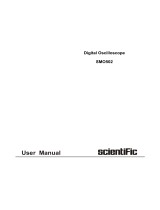 Scientific SMO502 Owner's manual
Scientific SMO502 Owner's manual
-
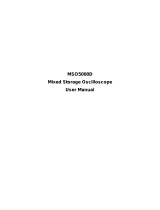 Hantek MSO5000D User manual
Hantek MSO5000D User manual
-
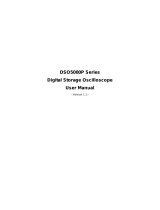 Hantek DSO5000P User manual
Hantek DSO5000P User manual
-
 Hantek 6102 User manual
Hantek 6102 User manual
-
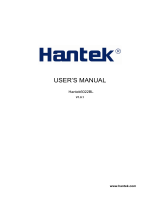 Hantek Hantek6022BL User manual
Hantek Hantek6022BL User manual
-
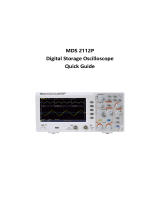 MUSTOOL Digital Storage Oscilloscope User guide
MUSTOOL Digital Storage Oscilloscope User guide
-
OWON XDS Series n-in-1 DSO Quick start guide
-
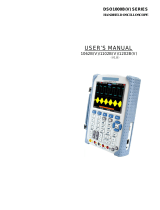 Hantek DSO1000BV User manual
Hantek DSO1000BV User manual
-
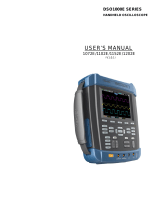 Hantek DSO1000E User manual
Hantek DSO1000E User manual
-
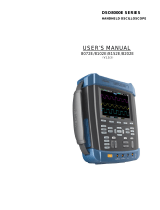 Hantek DSO8000E User manual
Hantek DSO8000E User manual






















































































































































































